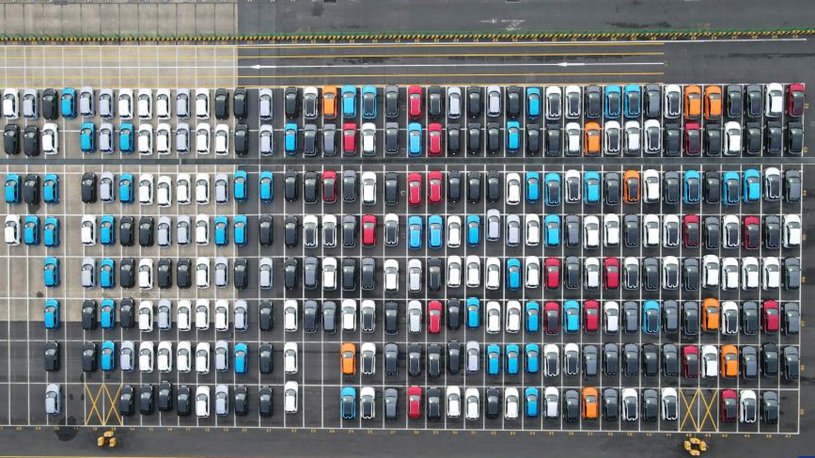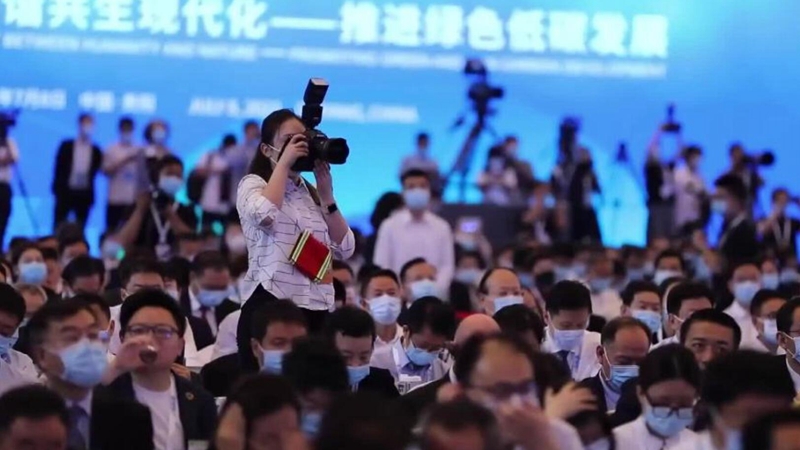
This photo taken on May 17, 2023 shows photovoltaic (PV) panels at a power station in Lop County, Hotan Prefecture, northwest China's Xinjiang Uygur Autonomous Region. (Xinhua/Du Gang)
BEIJING, July 12 (Xinhua) -- China, the world's largest producer and user of photovoltaic (PV) modules, will face massive retirement of PV modules, which have service lives of about 25 years.
The country's PV industry and researchers are working to find sustainable and economical ways to recycle the coming tens of millions of tonnes of retired modules.
MASSIVE RETIREMENT
The International Renewable Energy Agency predicts that by the time the first batch of PV modules come to the end of their service, China will have a large number of PV modules retired from 2025 onwards.
In 2030, the retired PV modules are expected to reach about 8 million tonnes globally and the figure in 2050 will be 80 million tonnes. China will need to recycle 1.5 million tonnes in 2030, and about 20 million tonnes in 2050.
PV modules are mainly composed of glass, backplate, battery, aluminum frame, brazing tape and junction box. Most of these materials, such as glass, copper, aluminum, silicon, silver, gallium and indium, can be recycled. The fluorine-containing backplate, however, is difficult to recycle and has the potential to pollute the environment.
The estimates also show that waste from the PV industry is expected to reach 350,000 to 1.55 million tonnes in China by 2027, and 33.5 million tonnes by 2050. This will be distributed in areas spanning 5 million hectares, becoming new "mines" for the industry to explore.
RECYCLING TECHS
In China's provincial-level regions such as Jiangxi, Hebei, Henan, Jiangsu and Ningxia, enterprises, universities and research institutes have begun to develop recycling technologies for this untapped field, including mechanical disassembling, physical decomposition and chemical decomposition. Several pilot programs and demonstration lines have been completed or put into operation.
In April, Li Jin, a professor with the School of Materials and New Energy, Ningxia University, led a team in field research at PV power stations built about 15 years ago in the Ningxia Hui Autonomous Region.
The team tested PV modules at those stations to find their defects after years of service and calculated their power generation efficiency to determine when to retire those modules.
Li's team has invented several types of equipment to disassemble PV modules. One can peel off the components of PV modules layer by layer, while another works like a hot knife to cut through panels with defects.
It's easy to disassemble PV modules into different parts, just like cars and televisions, but how to reuse the parts with high added value is a more difficult challenge, said Li, whose team plans to develop a disassembling machine to automatically sort disassembled materials for subsequent processing.
The disassembling and recycling of retired PV modules is profitable. According to Li, it takes 30 yuan (about 4.16 U.S. dollars) to buy a retired module. The raw materials disassembled and separated from it, such as glass, aluminum, polymer backplate, silicon, silver, indium and gallium, are worth more than 200 yuan.
GOVERNMENT SUPPORT
China Photovoltaic Industry Association set up a working group in June for recycling retired PV modules and invited government authorities, industrial organizations, PV producers and recycling enterprises for a meeting.
An official with the Ministry of Industry and Information Technology (MIIT) said at the meeting that the ministry will further improve the policy system for solar panel recycling and support the research, development and application demonstration initiatives of the sector.
According to an action plan to peak China's carbon dioxide emissions by 2030, issued by the State Council in October 2021, it will promote waste recycling in emerging industries, such as retired power batteries, PV modules and wind turbine blades.
In an action plan issued in December 2021, five departments including the MIIT and National Energy Administration called for the research, development and industrial application of recycling technologies for retired PV modules and comprehensive utilization of resources.
In September 2022, the MIIT said that it is necessary to speed up the revision and improvement of the standard system for the photovoltaic industry, and promote the building of public service platforms such as photovoltaic module recycling and carbon footprint verification. ■












